A torn ligament in the foot can cause significant discomfort and mobility issues. Understanding the signs of a torn ligament in the foot is crucial for timely treatment. This article will explore the symptoms, causes, and treatments for a torn ligament in the foot. Whether you have experienced this injury or want to prevent it, the information provided will be valuable.
Table of Contents
Anatomy of the Foot
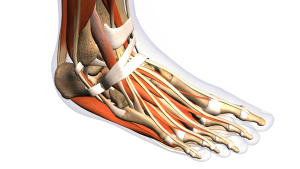 The foot comprises bones, ligaments, and tendons. Ligaments connect bones and support the arch. Key ligaments include the plantar fascia, anterior talofibular ligament, and calcaneofibular ligament.
The foot comprises bones, ligaments, and tendons. Ligaments connect bones and support the arch. Key ligaments include the plantar fascia, anterior talofibular ligament, and calcaneofibular ligament.
The plantar fascia is a thick band running along the bottom of the foot, supporting the arch. The anterior talofibular ligament, located outside the ankle, prevents the foot from moving too far forward. The calcaneofibular ligament also outside the ankle, helps keep the foot stable.
Understanding these ligaments aids in recognizing signs of a torn ligament. Proper diagnosis and treatment are crucial when these ligaments get injured.
Causes of Torn Ligaments in the Foot
Torn ligaments in the foot can result from various causes. Firstly, these injuries most commonly occur during sports or physical activities. Specifically, sudden twists, turns, or awkward movements can strain the ligaments, causing them to tear.
Additionally, overuse or repetitive stress is another frequent cause. For instance, activities involving repetitive motions, such as running or jumping, can gradually weaken the ligaments and eventually lead to a tear.
Furthermore, wearing inappropriate footwear can also contribute to ligament injuries. Shoes that do not provide adequate support or fit poorly increase the risk of a ligament tear in the foot.
Moreover, accidents, such as falls or direct blows to the foot, can result in torn ligaments. These incidents cause sudden and severe stress on the foot ligaments, leading to injury.
Understanding these causes helps in taking preventive measures to protect the ligaments in the foot.
Symptoms of a Torn Ligament
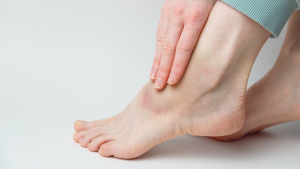 Symptoms of a torn ligament in the foot are often noticeable. Pain usually occurs immediately at the injury site and can range from mild to severe, depending on the tear’s extent.
Symptoms of a torn ligament in the foot are often noticeable. Pain usually occurs immediately at the injury site and can range from mild to severe, depending on the tear’s extent.
Swelling is a common symptom that appears quickly after the injury. The affected area may also bruise, showing discoloration.
Difficulty bearing weight on the injured foot is another key symptom. Walking or standing might become challenging or impossible due to instability.
A limited range of motion can indicate a ligament tear in the foot. Moving the foot or ankle might be painful and restricted.
Diagnosis
Diagnosing a torn ligament in the foot involves several steps. Initially, a podiatrist or specialist conducts a physical examination to identify signs of injury, such as swelling, bruising, and tenderness.
Next, imaging tests are often used for a more accurate diagnosis. For example, an X-ray can rule out fractures, while an MRI provides detailed images of the soft tissues, including ligaments, helping confirm the presence and extent of a torn ligament in the foot.
In some cases, a specialist might recommend an ultrasound. This test can also visualize soft tissues and assess the severity of the ligament tear.
Finally, after a thorough examination and imaging tests, the podiatrist will discuss treatment options. Torn ligament in foot treatment may include rest, ice, compression, and elevation (R.I.C.E.). Additionally, non-surgical treatments like physical therapy and bracing are common.
Treatment Options
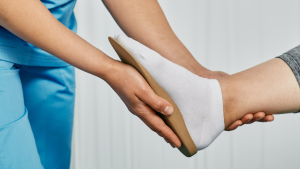 Treating a torn ligament in the foot involves various approaches. Initially, non-surgical methods are recommended. For example, the R.I.C.E. method—Rest, Ice, Compression, and Elevation—helps reduce swelling and pain.
Treating a torn ligament in the foot involves various approaches. Initially, non-surgical methods are recommended. For example, the R.I.C.E. method—Rest, Ice, Compression, and Elevation—helps reduce swelling and pain.
Physical therapy is also effective. A physical therapist will guide you through exercises to strengthen the foot and improve flexibility. Bracing or wearing a supportive boot may be advised to stabilize the foot during recovery.
Medications, such as anti-inflammatory drugs, can help manage pain and reduce inflammation. These are usually recommended by your podiatrist or specialist.
If non-surgical treatments are ineffective, torn ligament in foot surgery might be necessary. A foot surgeon will evaluate the injury and determine if surgery is the best option. Surgery typically involves repairing or reconstructing the damaged ligament to restore stability and function.
Post-surgery, rehabilitation is crucial. Physical therapy will continue to play a key role in regaining strength and mobility. Following the foot surgeon’s advice and adhering to the rehabilitation plan ensures a successful recovery.
Choosing the right treatment option depends on the severity of the injury. Consulting a specialist, like a podiatrist or foot surgeon, ensures the best care for a torn ligament in the foot.
When to See a Podiatrist
Knowing when to see a podiatrist for a torn ligament in the foot is crucial. Early intervention prevents further damage and speeds up recovery.
Consult a podiatrist if you experience severe pain immediately after an injury or persistent pain that doesn’t improve with rest. Swelling and bruising that don’t subside within a few days indicate a serious injury. Difficulty bearing weight or noticeable instability while walking also warrant a visit.
Recurrent symptoms after initial treatment suggest improper healing and need a specialist’s evaluation. Suspecting a ligament tear or having symptoms affecting daily activities means it’s best to consult a podiatrist. They can provide an accurate diagnosis and recommend appropriate treatment. Early treatment ensures better recovery and prevents long-term complications.
Living with a Torn Ligament
 Living with a torn ligament in the foot requires careful management. Daily activities may need modification to avoid further strain. Following the treatment plan provided by your podiatrist is crucial.
Living with a torn ligament in the foot requires careful management. Daily activities may need modification to avoid further strain. Following the treatment plan provided by your podiatrist is crucial.
Wearing supportive footwear with good arch support and cushioning is essential. Orthotics or custom insoles can offer additional support. Engage in low-impact exercises like swimming or cycling to maintain fitness without aggravating the injury.
Pain management is important. Use over-the-counter pain relievers or prescribed medications to control pain and inflammation. Applying ice packs and keeping the foot elevated can also reduce discomfort.
Support groups and resources can provide emotional support and practical advice. Connecting with others who have experienced similar injuries can be beneficial.
Regular follow-ups with your podiatrist ensure the healing process is on track. Additionally, they can adjust your treatment plan and guide you on resuming normal activities. Moreover, adopting these strategies can help manage a torn ligament in the foot and improve your quality of life.

Conclusion
A torn ligament in the foot can significantly impact daily life and mobility. Therefore, understanding the symptoms, causes, and treatment options is essential for proper management. Early diagnosis and timely treatment, guided by a specialist like a podiatrist, can prevent further damage and promote healing.
Addressing the injury promptly, whether through non-surgical methods or, if necessary, torn ligament in foot surgery, is crucial. Consequently, following a comprehensive treatment plan and making necessary lifestyle adjustments can aid in a successful recovery.
Furthermore, maintaining foot health and seeking professional advice when needed are key to preventing and managing ligament injuries. With the right care and support, living with a torn ligament in the foot can become more manageable, allowing for a return to normal activities and improved quality of life.
If you suspect a torn ligament in your foot, don’t wait. Consult a specialist today for the best care and recovery. Your foot health is vital for an active and pain-free life.
 Frequently Asked Questions (FAQs)
Frequently Asked Questions (FAQs)
What does a torn ligament feel like in your foot?
A torn ligament in the foot feels like sharp pain at the injury site. Swelling, bruising, and tenderness often accompany the pain. You may also experience difficulty moving the foot and bearing weight.
How do I know if I tore a ligament in my foot?
Signs of a torn ligament in the foot include immediate pain, swelling, and bruising. Difficulty bearing weight and a feeling of instability are common symptoms. If you suspect a torn ligament, consult a specialist for an accurate diagnosis.
Can you walk with a torn ligament in your foot?
Walking with a torn ligament in your foot is often difficult and painful. The extent of the injury determines the ability to walk. Severe tears usually require rest and immobilization to heal properly.
Do foot ligaments heal on their own?
Foot ligaments can heal on their own with proper care and rest. However, in cases of severe tears, medical intervention may be required. For instance, physical therapy or surgery might be necessary to ensure complete recovery. Therefore, following a specialist’s treatment plan is essential for effective healing.
About Dr. Neilson
Dr. Cameron Neilson is a distinguished podiatrist at Ankle & Foot Centers of America. He began his academic journey at Brigham Young University, earning a Bachelor of Science in Neuroscience.
After moving to Oakland, California, Dr. Neilson earned his Doctorate of Podiatric Medicine from Samuel Merritt University. Subsequently, he completed an Advanced Reconstructive Foot and Ankle Surgery Residency at Emory Healthcare in Decatur, GA.
Additionally, Dr. Neilson is a respected faculty member of The Podiatry Institute. Moreover, his research, including a study on the K-Wire Axis Guide for the Evans Osteotomy, has been published in the Journal of Foot and Ankle Surgery.
He is also affiliated with Piedmont Eastside, Piedmont Atlanta, Emory Decatur, and Wellstar LaGrange Hospitals.
For more information or to schedule an appointment with Dr. Neilson, please contact our office at 678-750-9941.

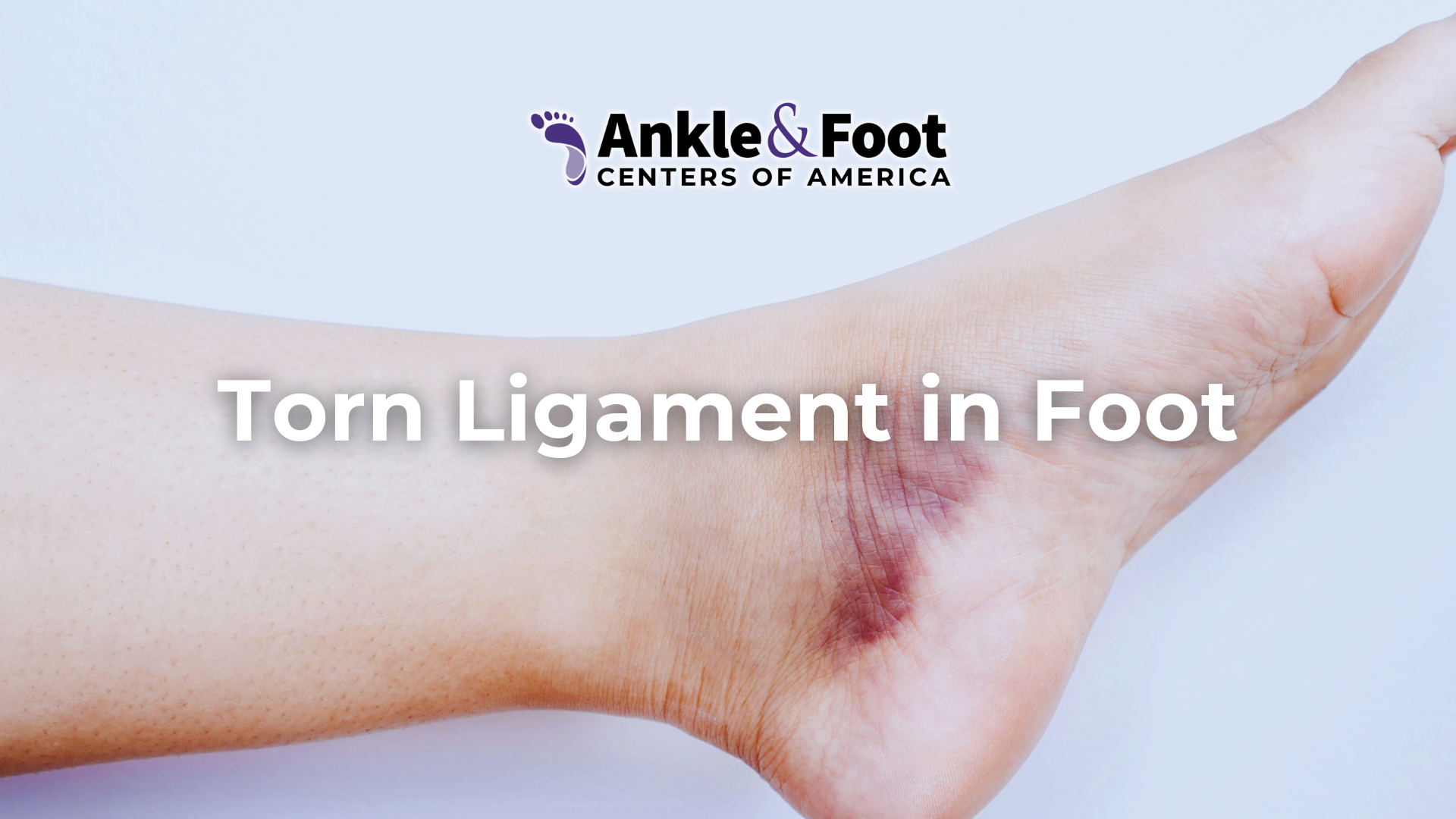
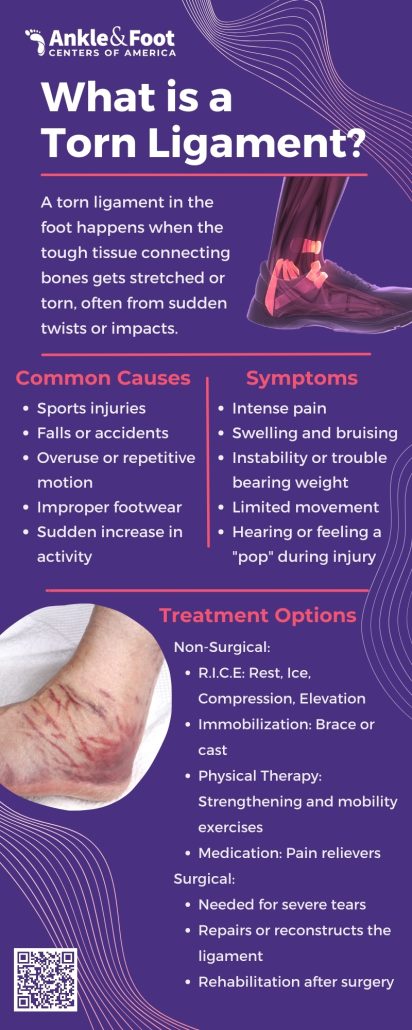 Frequently Asked Questions (FAQs)
Frequently Asked Questions (FAQs)


